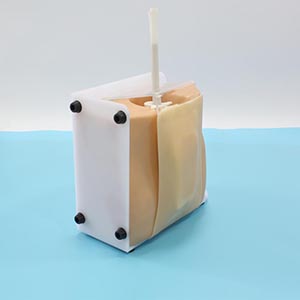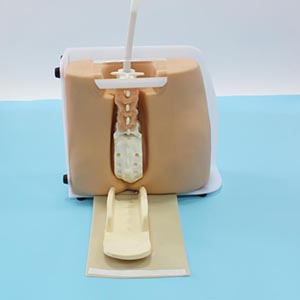Through spinal tap model training, students can practice repeatedly in a simulated environment to master the correct Angle and depth of puncture. This is essential to improve the accuracy of clinical procedures, especially in the case of avoiding accidental injury to the nerve or spinal cord. Here is a brief analysis of how to master these skills by training a model:

Design and application of teaching model
Training models for spinal taps typically include anatomical simulations (such as a real human body or virtual anatomy), as well as the ability to adjust the depth and Angle of the puncture combined with simulators. During the training, students can adjust the operation according to the patient's position and simulate puncture techniques in different spinal areas (such as lumbar puncture or cervical puncture). The model often provides real-time feedback to help students identify whether the Angle and depth of the piercing are correct and avoid accidental injury caused by too deep piercing or improper Angle.
Opinions of industry experts
Industry experts generally agree that spinal tap model training is an effective tool for medical students and residents when learning the technique. Experts point out that the accuracy of the procedure is directly related to the success of the puncture and whether it will cause complications (such as headache, bleeding, infection, etc.). The spinal tap model provides a risk-free practice environment that significantly reduces harm to patients during the learning process. In addition, experts also stressed that simulation training can help students better cope with practical operations in stressful situations, especially rapid decision-making in emergency rooms.

Data support
According to a study of simulation training, participants who underwent spinal tap simulation training improved their accuracy of the procedure by more than 35% and had significantly lower complication rates than those who did not undergo simulation training. The study also showed that 90% of participants were able to successfully complete piercings in practice after the simulation training, and the majority of participants said they were more confident in the Angle and depth control of piercings through the model training.
Conclusion
Spinal tap model training not only helps students master the correct Angle and depth of puncture, but also improves students' skill level in a risk-free environment. Through simulation training, students are able to correct errors through real-time feedback and eventually reach a proficient level of clinical manipulation. Both the data and the opinions of industry experts show that simulation training has a significant role in improving operational accuracy and reducing clinical complications. Therefore, spinal tap model training is an important part of medical education.

